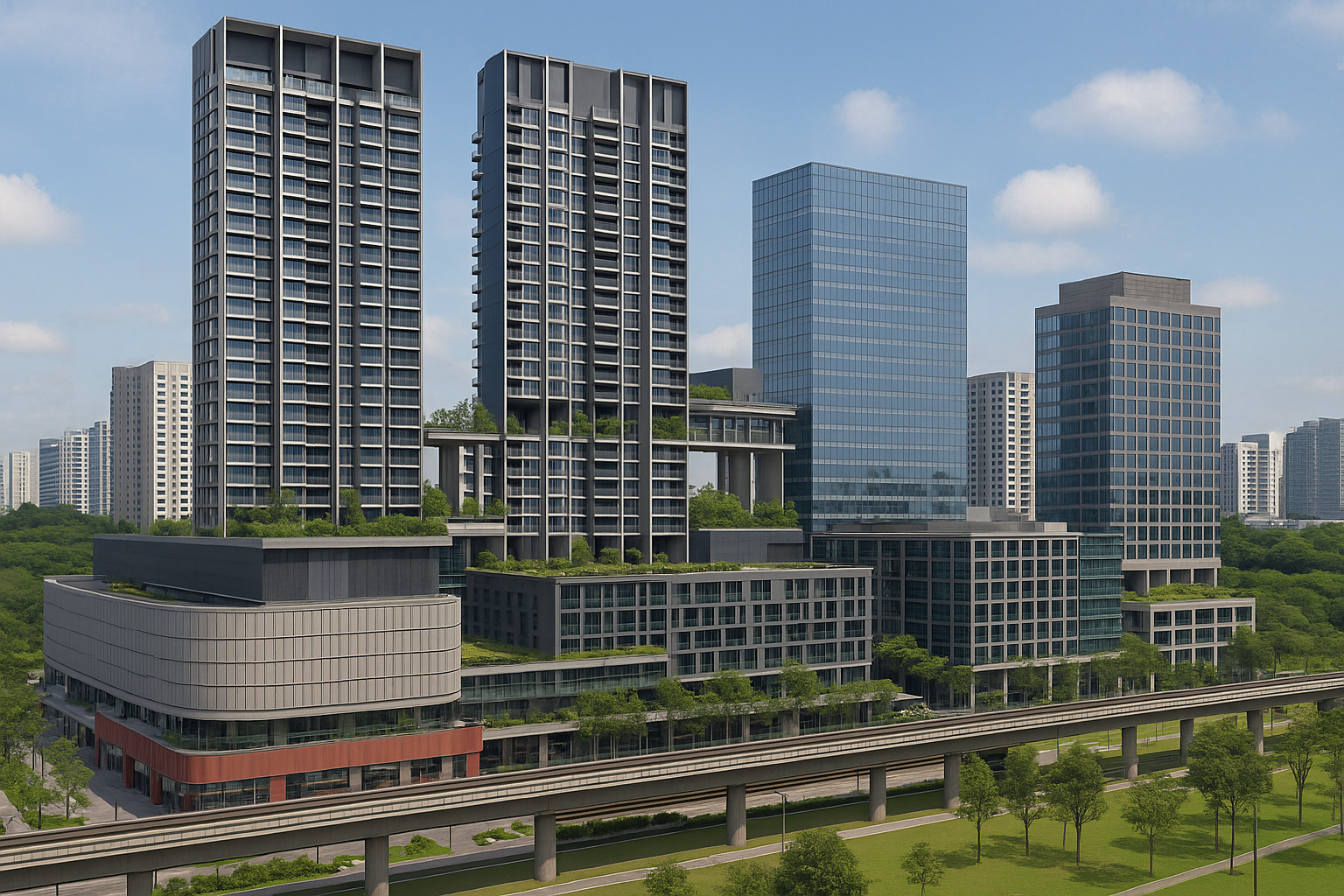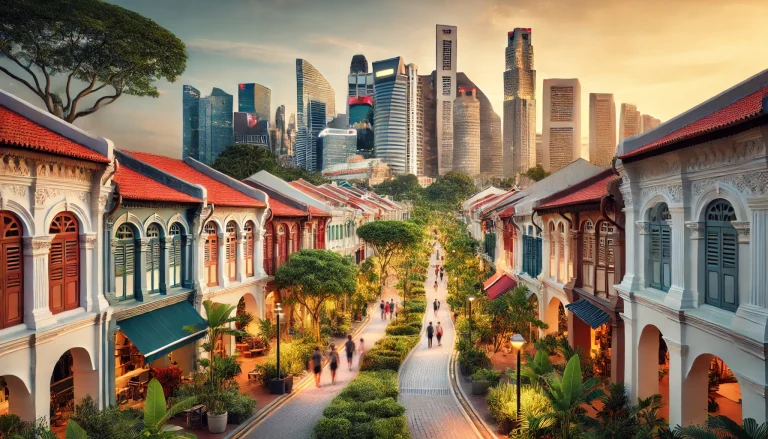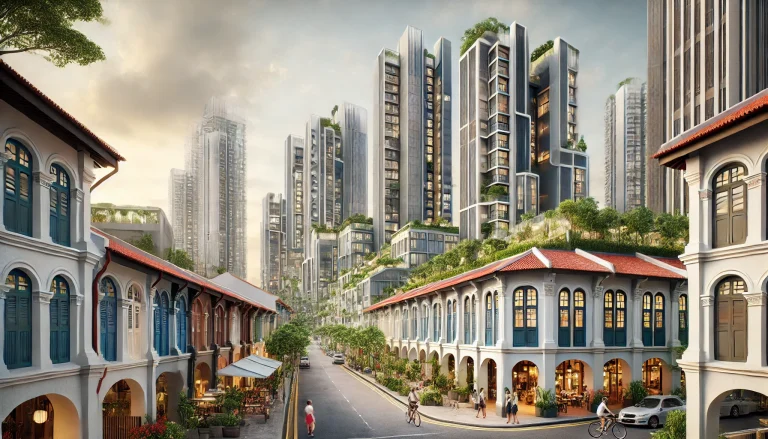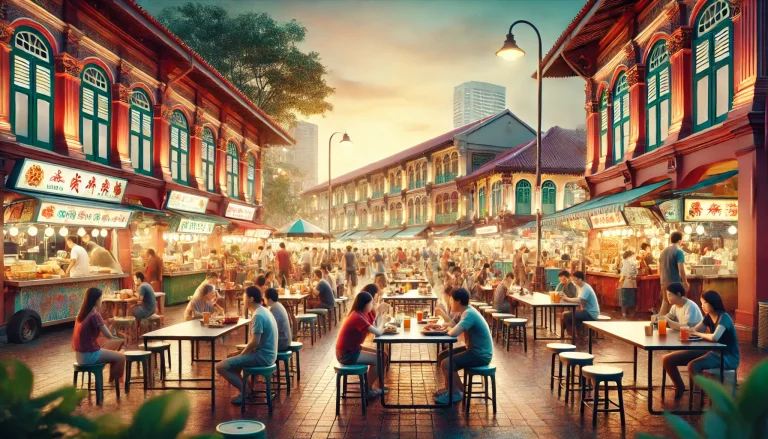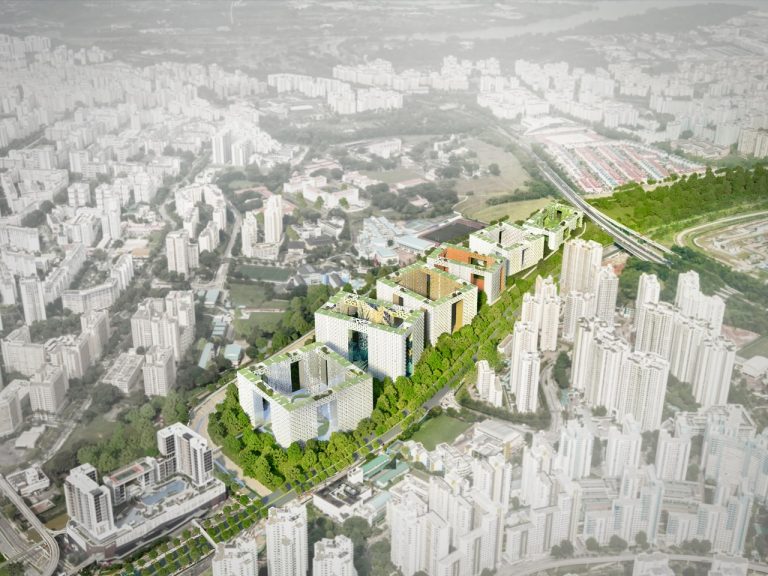Singapore’s skyline is being reshaped by a deliberate shift toward mixed-use developments. These projects integrate residential, commercial, and recreational components within a single site. They’re not a trend but a strategic response to land scarcity, population growth, and changing lifestyle needs.
Why Mixed-Use Developments Are Taking Over
Singapore faces unique land constraints. With limited space and a growing population, urban planners must extract maximum utility from each parcel. Mixed-use developments address this need directly by stacking and integrating various uses into a compact footprint.
Instead of separating living, working, and leisure into different neighborhoods, these developments combine all three. This approach reduces the strain on transportation systems and helps minimize environmental impact. The Urban Redevelopment Authority (URA) has strongly backed this direction through its Master Plan, promoting these developments across new and mature areas.
Shophouses of the past provide a historical precedent. They combined commercial activity on the ground floor with residences above, echoing the modern live-work-play ideal.
What Makes Integrated Living Attractive
The appeal of mixed-use living extends beyond convenience. It creates entire micro-communities. Residents can access supermarkets, clinics, fitness studios, and cafes without leaving the premises. Some projects even integrate co-working spaces and childcare facilities.
Benefits include:
- Reduced commute time: Proximity to MRT stations and transport hubs means residents can bypass traffic and cut travel time significantly.
- Stronger community ties: Public plazas, rooftop gardens, and shared amenities provide natural spaces for interaction.
- Higher property values: Mixed-use projects tend to perform better in both price appreciation and rental yield.
- Sustainability: With less reliance on vehicles, carbon emissions decrease, aligning with national green initiatives.
In a 2024 market study, integrated developments posted stronger median unit price growth than standalone residential projects. Investors see them as a safer long-term asset with diversified income streams.
Current Challenges Behind the Appeal
These developments demand careful calibration. Balancing residential peace with commercial vibrancy is not straightforward. A rooftop bar may thrill visitors but frustrate those living a few floors below.
Common challenges include:
- Noise and privacy conflicts: Businesses like restaurants and gyms generate activity that may intrude on residents’ quiet enjoyment.
- Traffic and parking congestion: A poorly designed ingress or lack of parking controls can choke surrounding roads.
- Zoning and compliance: Developers must work through regulations that affect floor usage, fire safety, and accessibility.
- Cost premiums: Integrated sites often come with higher land and construction costs, passed on to end-users via higher prices.
Smart design mitigates many of these concerns. Developers segment zones vertically or buffer residential units from public-facing spaces. Mixed-use need not mean mixed-up.
What the Future Holds for Mixed-Use Developments
Singapore’s next wave of projects is moving past the basics. Developers now focus on embedding technology, green architecture, and modular work-life solutions.
Future trends:
- Smart infrastructure: From automated waste management to smart lifts and energy monitoring, tech adoption will become baseline.
- Green focus: Rooftop farms, biophilic design, and net-zero ambitions are growing in prominence.
- Flexible spatial planning: Work-from-home norms have shifted expectations. Spaces that can toggle between office and domestic use are gaining traction.
The Punggol Digital District serves as a template for this next phase. Designed as a smart business district, it fuses academia, commerce, and community into one ecosystem. The Singapore Institute of Technology campus shares space with business parks. A digital platform manages energy, security, and transport systems. The district also integrates the Punggol Coast MRT station and promotes a car-lite environment.
Key Projects Driving the Trend
These developments aren’t isolated to fringe areas or test beds. Major sites across the island are undergoing transformation.
Noteworthy examples:
- Union Square: Rising from the former Central Mall and Central Square, it will include residences, co-living spaces, and office towers.
- Marina View Residences: A new anchor in the Central Business District combining housing, retail, and a hotel.
- Hougang MRT Mixed Development: Positioned atop a transport hub with integrated amenities and retail outlets.
- JCube Redevelopment: Jurong East’s mall-turned-tower will bring a 40-storey residential development with commercial podiums.
The URA’s Draft Master Plan has outlined more such projects, especially in the Central Business District. These aren’t merely clusters but orchestrated vertical neighborhoods. “Vertical zoning” will soon assign distinct uses to different floors — light industry on lower levels, offices mid-tier, and residences above. This strategy reflects a pivot toward compact self-sustaining communities.
Mixed-Use Is Not a Phase — It’s Policy
The shift toward mixed-use development isn’t market-driven alone. It’s backed by regulatory frameworks, infrastructure support, and urban design principles.
Singapore is constructing not just buildings, but ecosystems. These projects reduce sprawl, shorten commutes, and bring daily needs within walking distance. As the lines between home, office, and leisure blur, mixed-use developments offer clarity through integration.
The city-state isn’t chasing convenience. It’s building cities within a city — efficient, walkable, connected, and future-ready. Mixed-use developments aren’t just a response to constraints. They’re a recalibration of how urban living should work.
